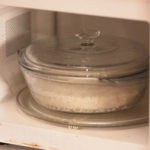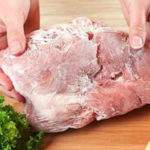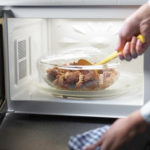Food wrap is an essential item for daily food preservation for families. Considered a kitchen staple, this wrap not only helps keep food fresh when stored in the refrigerator but is also used by many to cover food when reheating in the microwave. This practice not only prevents food from splattering but also makes cleaning the microwave a simpler task afterward.
However, using food wrap in the microwave requires caution. Master’s degree holder Nguyen Xuan Tuan states that not all food wraps are suitable for microwave use. It is crucial for consumers to identify the material of the wrap through the symbols on the packaging. This ensures safety and helps avoid potential hazards when reheating food.
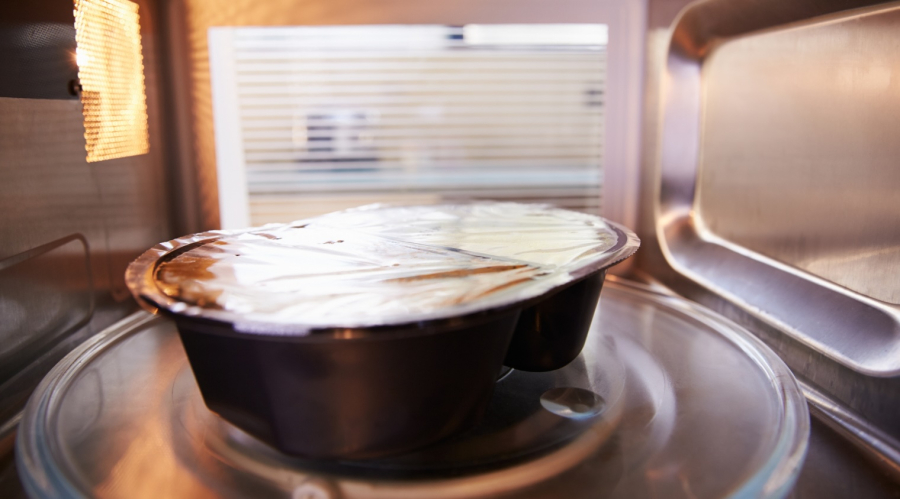
Use Food Wrap in the Microwave with Caution
How to Identify Different Types of Food Wrap
Currently, there are two main types of food wrap available on the market. The first type is the regular food wrap, typically used for food preservation under normal conditions and in refrigerators. Products in this group are usually made of PE (polyethylene) or PVC (polyvinyl chloride). These wraps cannot withstand high temperatures and can be dangerous if used in the microwave, especially PVC, as it contains plasticizers in addition to plastic.
In contrast, the second type of food wrap is referred to as “premium” wrap, which has good heat resistance and can be used in the microwave. These wraps include PMP (polyvinylidene chloride) and PVDC (polyvinylidene chloride). PMP and PVDC wraps can withstand temperatures from 140 to 180 degrees Celsius and usually have clear information on the packaging for consumer identification.
Nonetheless, microwave-safe food wraps tend to be more expensive than regular ones. Therefore, consumers should pay attention to the symbols on the packaging to accurately identify the type of wrap that can be safely used in the microwave. If clear information is not found or there is a note prohibiting microwave use, it is best not to use that wrap for reheating food.
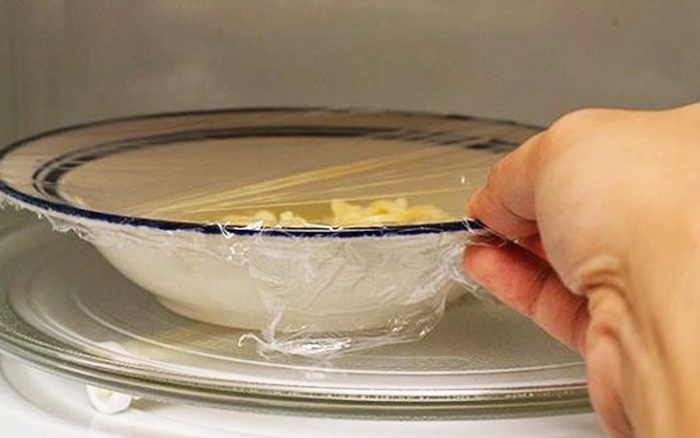
Microwave-safe Food Wrap Tend to be More Expensive
Risks of Using the Wrong Type of Food Wrap in the Microwave
Regular food wrap, mainly made of polyethylene plastic, can withstand a certain level of heat without melting. However, when placed in a high-temperature microwave without safety instructions, this plastic can release harmful chemicals into the food, such as Bisphenol A (BPA) and phthalates. According to reports from the US Food and Drug Administration (FDA) and other health organizations, these chemicals have been linked to abnormal hormone function in the body, negatively impacting health.
Therefore, it is essential to use food wrap specifically designed for microwave use. These wraps are typically made of heat-resistant polyethylene and do not contain BPA, ensuring consumer safety.
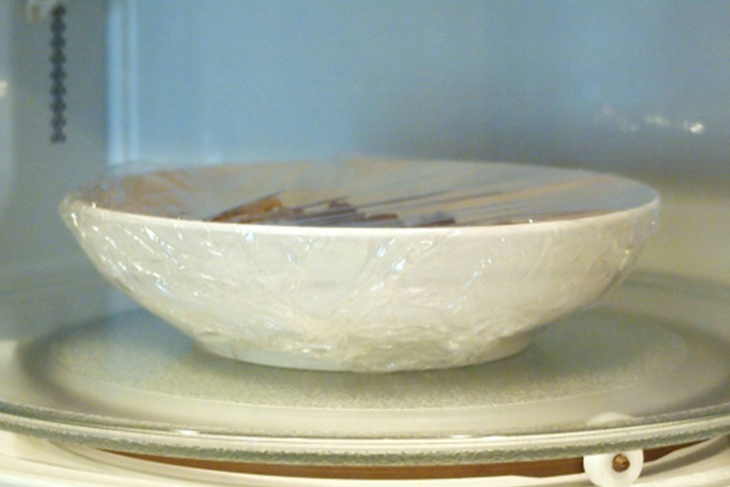
Use Food Wrap Designed for Microwave
When using food wrap in the microwave, users should also avoid direct contact between the wrap and the food. This helps minimize the risk of chemicals from the wrap mixing with the food and prevents the wrap from melting and sticking to the food, affecting its taste and quality.
Additionally, to ensure safe reheating, it is necessary to create ventilation for steam release. Users should make small holes in the food wrap before heating to avoid pressure buildup that could cause an explosion, damaging the microwave and the food inside.
In conclusion, while it is possible to use food wrap in the microwave, it should be done carefully and correctly. If unsure about the type of wrap, consumers should consider alternative methods such as using plates, glass containers, or silicone materials specifically designed for microwave use. These options are not only safe but also reusable, helping to reduce plastic waste and contribute to environmental protection.

























